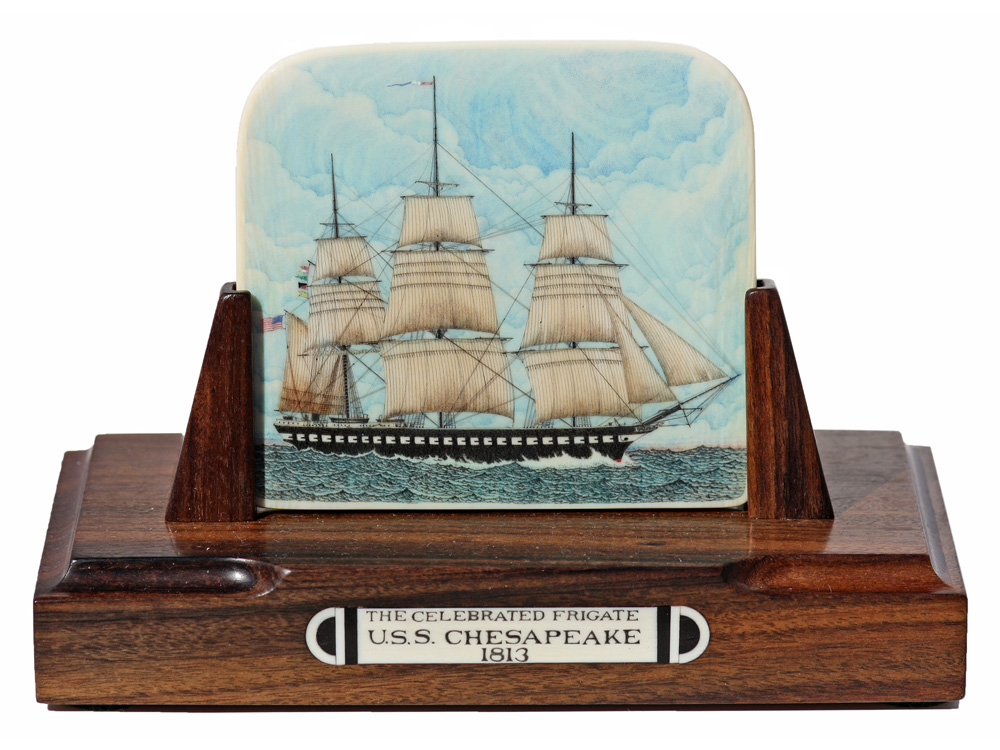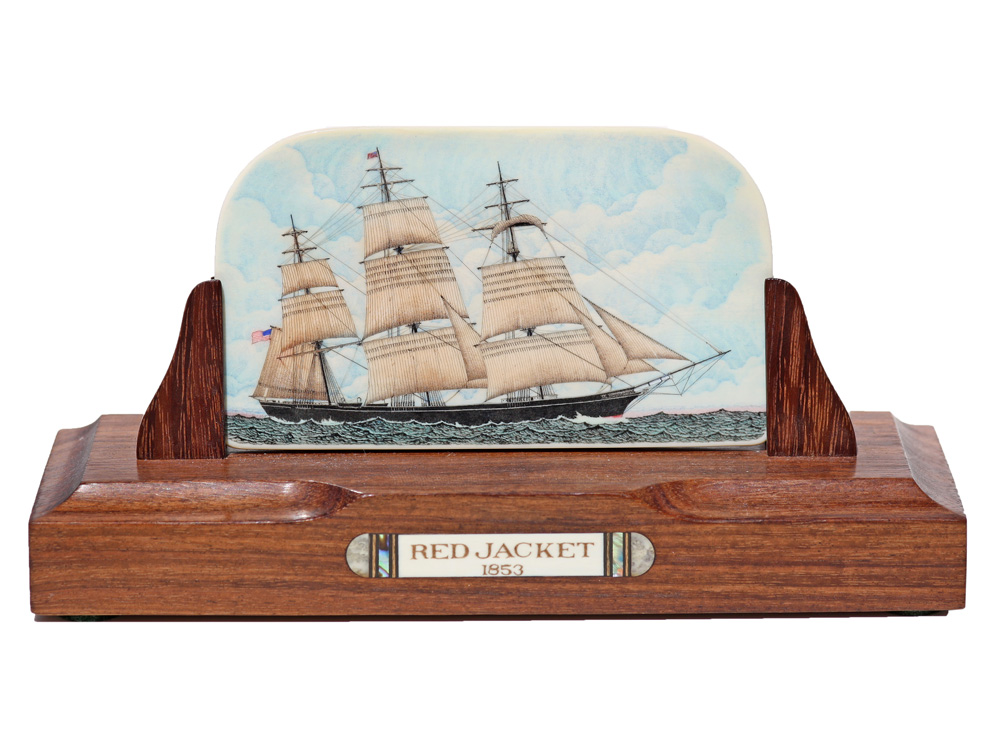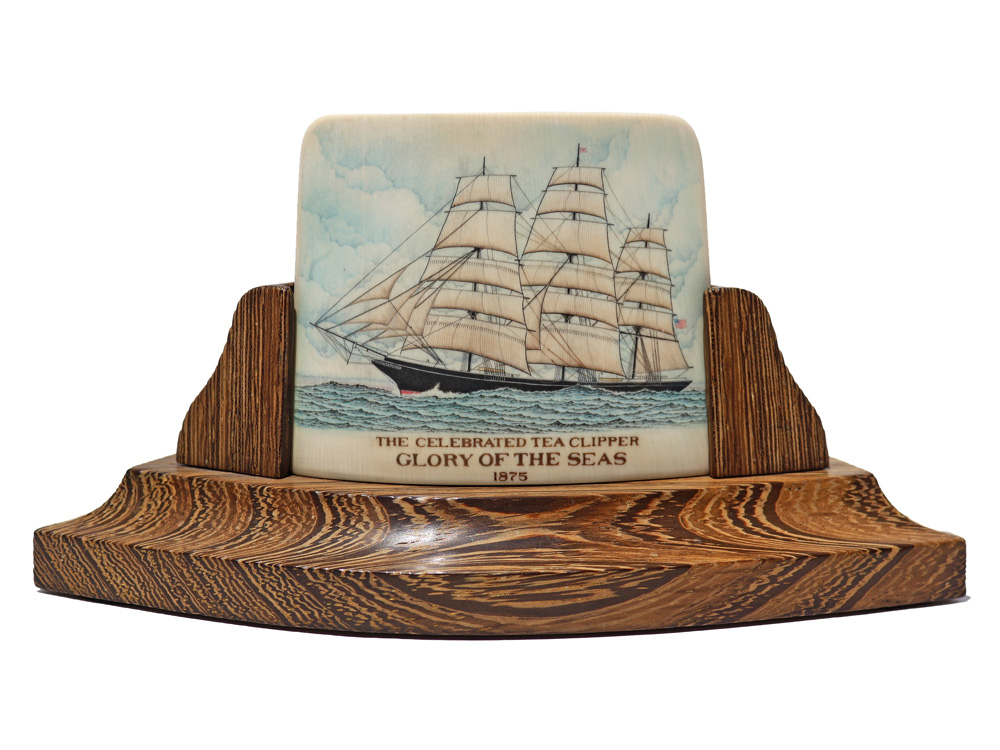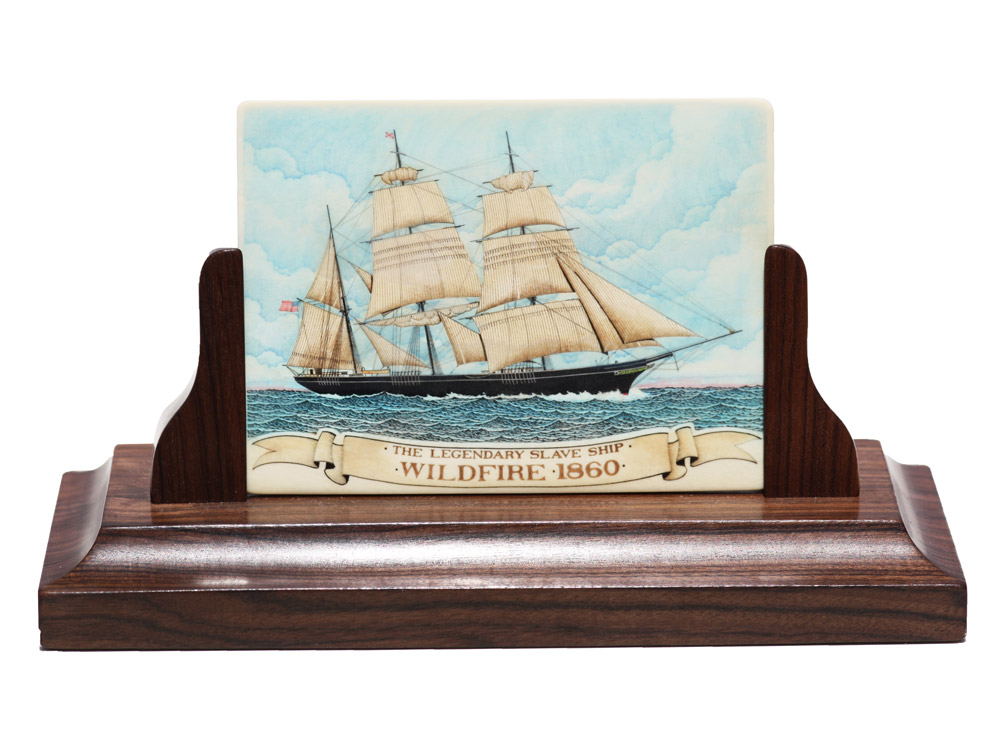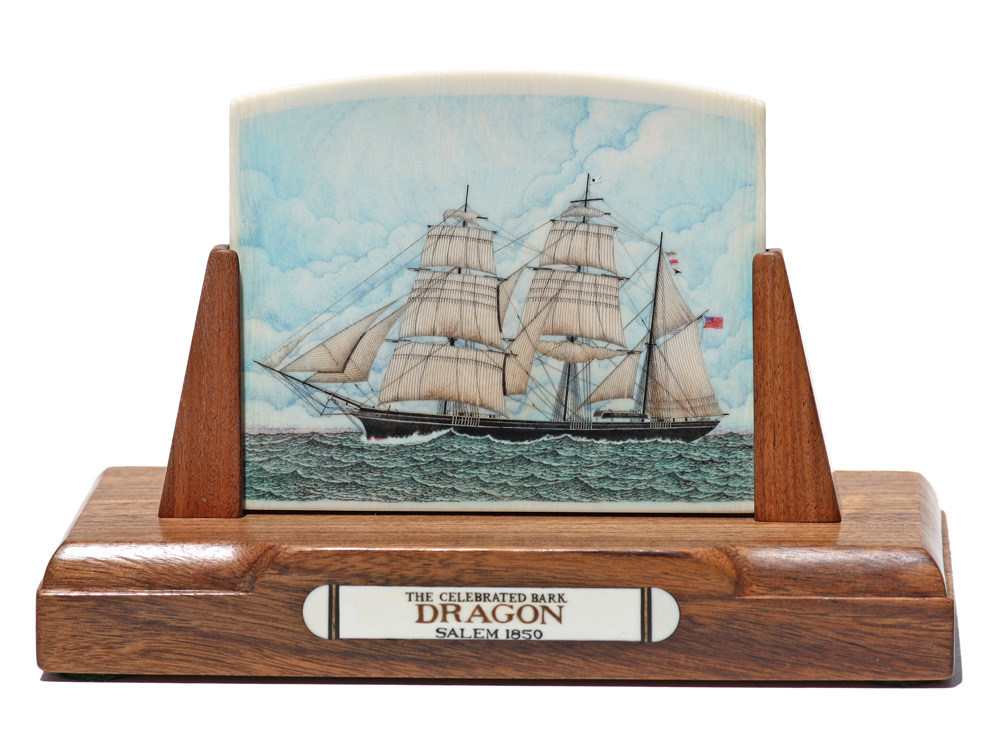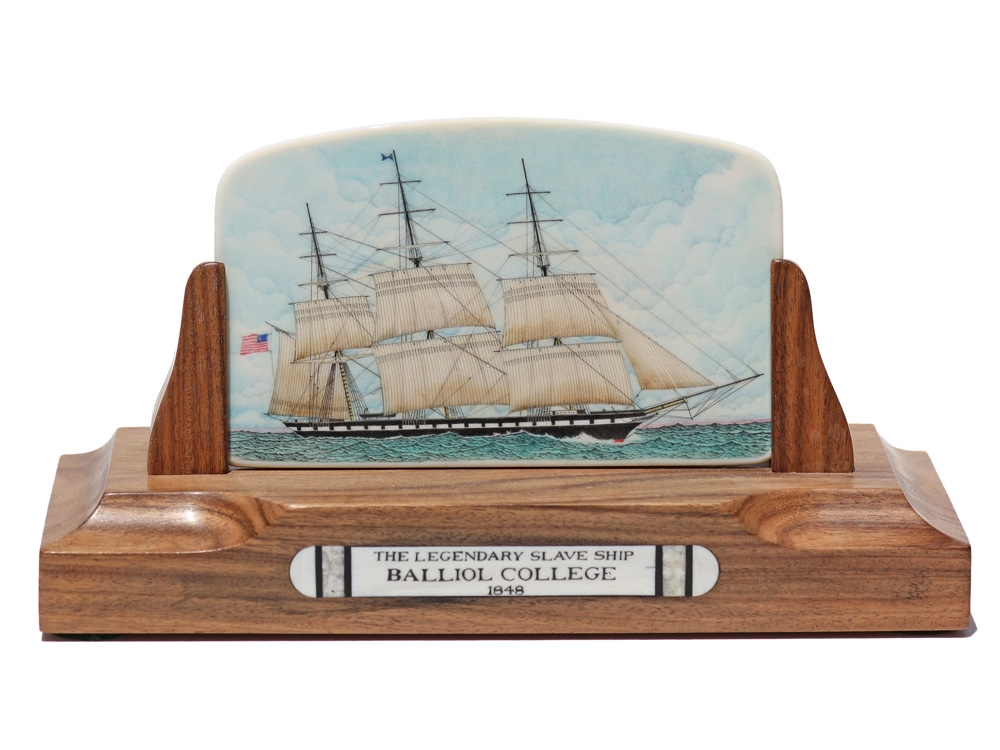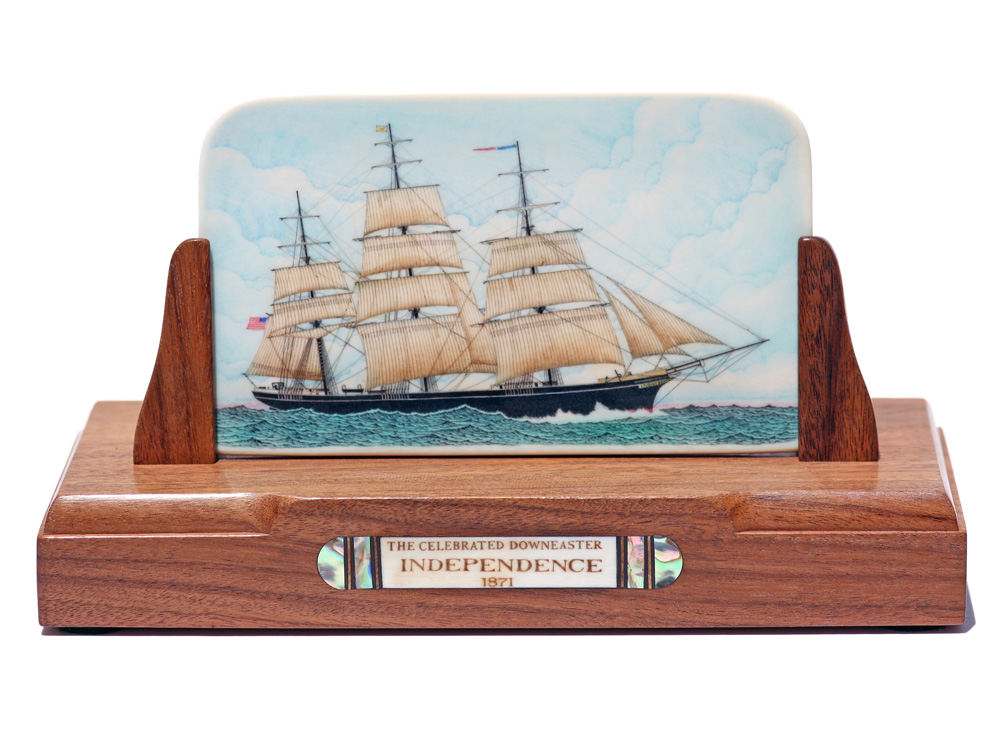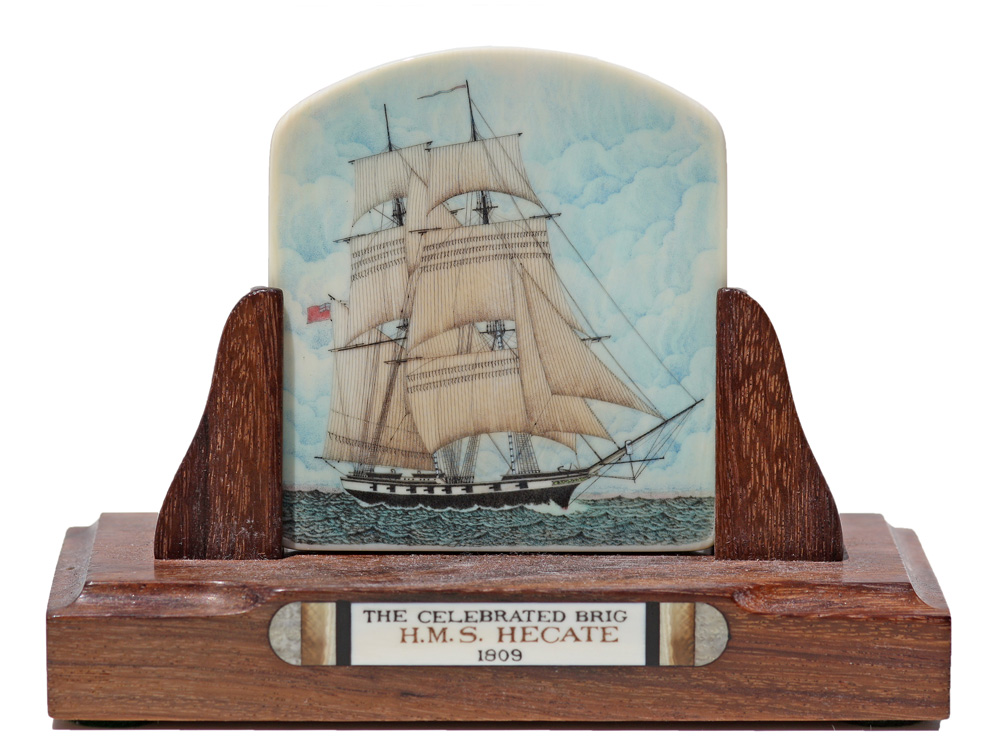Color scrimshaw on pre-ban African Ivory by Joel Cowan. When it comes to detailed (and I do mean detailed) ship portraits, there is Joel Cowan and then there is everyone else. Working in time consuming stipple technique, Cowan does thousands and thousands of tiny dots for each prized portrait. We have worked with Cowan for several decades and are fortunate enough to have accumulated several of his pieces. These are prized by knowing collectors throughout the U.S. and abroad and many collectors have several Cowans in their collections. Now is the perfect opportunity to acquire one for yourself.
Taken from the internet:
The Capture of USS Chesapeake, or the Battle of Boston Harbor, was fought on 1 June 1813, between the Royal Navy’s frigate HMS Shannon and American frigate USS Chesapeake, as part of the War of 1812 between the United States and Great Britain. The Chesapeake was captured in a brief but intense action in which over 80 men were killed. This was the only frigate action of the war in which there was no preponderance of force on either side.
At Boston, Captain James Lawrence took command of Chesapeake on 20 May 1813, and on 1 June, put to sea to meet the waiting HMS Shannon, the frigate whose written challenge had just missed Chesapeake ’s sailing. Chesapeake suffered early in the exchange of gunfire, having her wheel and fore topsail halyard shot away, rendering her unmanoeuvrable. Lawrence himself was mortally wounded and was carried below. The American crew struggled to carry out their captain’s last order, “Don’t give up the ship!”, but the British boarding party overwhelmed them. The battle was notably intense but of short duration, lasting ten to fifteen minutes, in which time 252 men were killed or wounded. Shannon ’s Captain Philip Broke was severely injured in fighting on the forecastle. Chesapeake and her crew were taken to Halifax, Nova Scotia, where the sailors were imprisoned; the ship was repaired and taken into service by the Royal Navy. She was sold at Portsmouth, England in 1819 and broken up. Surviving timbers were used to build the nearby Chesapeake Mill in Wickham and can be seen and visited to this day.
Notice:
This scrimshaw is done on pre-ban African ivory. Since the passage of the CITIES Treaty in 1973, there has been no African ivory brought into the U.S. However, ivory that was in the U.S. prior to 1973 can be legally sold and shipped within the U.S. However, new legislation taking effect in 2016 restricts pre-ban African Ivory from being shipped interstate. It can only legally be shipped intrastate, (within the state). All of our pre-ban ivory is located with our associate in the state of Florida. It can be purchased directly from our website and shipped only to an address within the state of Florida. If one has a relative, trusted friend or business associate within the state of Florida, we can ship to that specified address in order to comply with the new Federal legislation. The scrimshaw can then be forwarded it to you and everyone complies with the law. Any questions email or call us.

